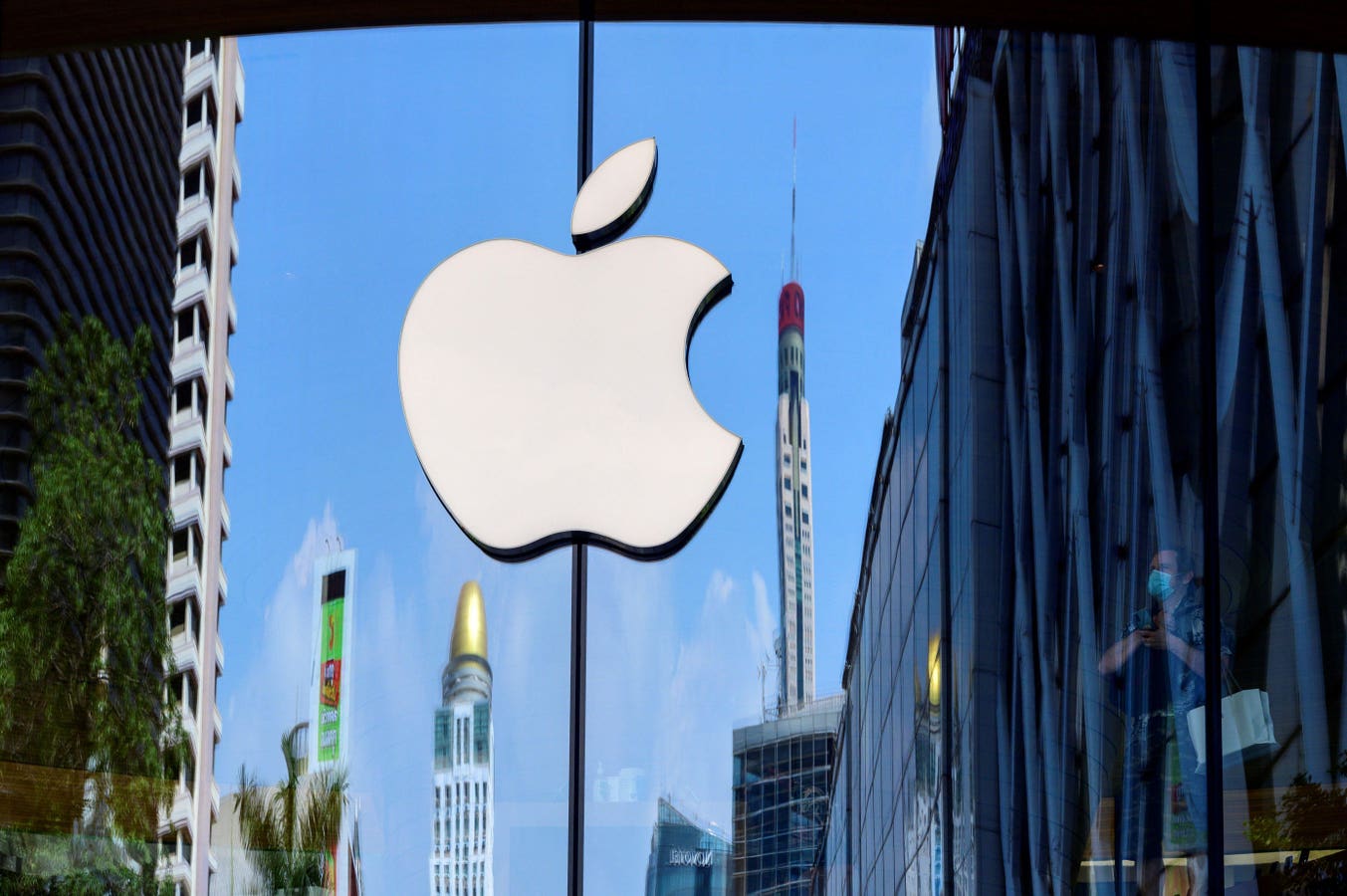Diversity and Inclusion (DEIA)
Why Work-Life Balance Is a Myth—and Why Embracing Your Rhythm Is the Real Goal

In Season 3 of HBO Max’s cultural hit The White Lotus, three women—each seemingly “living the dream”—reveal a more complex reality beneath the surface. A glamorous TV star (portrayed by White Lotus newcomer Leslie Bibb), a seemingly perfect housewife, and a high-achieving corporate lawyer all grapple with the hidden pressures of “having it all.”
As their stories unfold, the show exposes a painful truth: traditional definitions of success are not only outdated—they’re unattainable. What’s more, women often judge one another harshly while wrestling with their own internal doubts, creating a cycle of comparison and burnout.
The age-old pursuit of work-life balance becomes another trap. It’s time to rethink the language—and the expectations.
Why Work-Life Balance Fails Working Women
The numbers tell a sobering story. Research continues to show women are burning out at higher rates than men, yet the outdated narrative of “balance” continues to persist.
The term implies equal distribution of energy across work, family, and personal time—something rarely possible, especially for women, who often carry the majority of caregiving responsibilities. In the workplace, women are 48% more likely to volunteer for “non-promotable” tasks—essential to company operations but rarely rewarded in career advancement.
As a result, many women find themselves stretched too thin, constantly navigating an unsustainable juggle of duties both at home and in the office.
The Generational Pressure to Perform
Lybra Clemons, a C-suite tech executive, offers a personal reflection: “Generation X grew up thinking success was tied to constant motion. You had to be busy—working, socializing, striving. It felt like success only mattered if it was chaotic and borderline unattainable.”
This mindset, she adds, left little room for stillness, clarity, or genuine fulfillment.
The Longevity Factor
Susan Alexander, retired CHRO of Sotheby’s, raises another point: “Young people today will easily live to 100. Instead of cramming everything into a 30- or 40-year career, what does ‘having it all’ look like over a 100-year lifetime?”
This longer view shifts the question entirely. It’s not about having everything at once—it’s about having what matters, when it matters most.
Introducing a New Framework: Work-Life Rhythm
Rather than striving for impossible balance, a more sustainable approach is to embrace work-life rhythm—an adaptable, fluid mindset that recognizes priorities will shift depending on the season of life.
Defining Success on Your Own Terms
Alicia Hare, CEO of Tournesol, believes in redefining success from within. “No company will define it for us—it’s deeply personal,” she says. “You have to ask: What does ‘having it all’ look like for me right now?”
Work-life rhythm encourages this flexibility. Instead of a rigid structure, it honors the changing needs of individuals at different career and life stages.
Rethinking Workplace Support
Companies also need to evolve. As of 2021, unpaid care work contributes over $600 billion annually to the U.S. economy—much of it provided by women. Yet most workplaces fail to accommodate the realities of caregivers.
Alexander reflects on her conversations with working mothers: “I expected them to ask for things like onsite childcare. Instead, each had their own ‘crazy quilt’ of support systems. They didn’t want a one-size-fits-all solution. They needed flexibility.”
That might look like access to caregiving services, sabbaticals, or project-based scheduling. The key is customization.
Rhythm Requires Collaboration
Hare underscores that achieving this rhythm is a two-way conversation. “Women have to say, ‘This is what I need,’ and sometimes the company has to say, ‘This is what we need.’” It’s about finding shared ground and honoring what works best—together.
Making It Work: Practical Steps Toward Fulfillment
Build a Strong Support Network
Community is essential to sustaining your rhythm. “Women need spaces to share real stories—not through the lens of what society expects, but through ‘how are you making it work?’” says Hare.
That might mean joining peer groups, alumni circles, or professional associations. The right support system offers encouragement, insight, and connection across life stages.
Redefine What Success Feels Like
Traditional metrics—titles, bonuses, promotions—don’t fully capture fulfillment. Clemons shares her new approach: “Success now means creating an environment where I feel peace and freedom. It’s about having choices.”
What success looks like can change: early in your career, it might mean saying yes to growth opportunities. Later, it might mean turning down evening events in favor of time with family. Still later, it could mean pausing your career to focus on mental health or caregiving.
Instead of asking, “Can I have it all?” ask, “What do I need most right now?”
Prioritize Health: Your Greatest Asset
Without health, no version of success is sustainable.
Alexander reflects: “We didn’t think about health in our 20s and 30s. But if I want to play with my grandkids at 80, what am I doing now to make sure I can?”
That might mean incorporating short walks, breathing exercises, or wellness apps into your routine. Many companies also offer benefits like mental health resources, gym reimbursements, or flexible schedules—use them intentionally. These are not luxuries. They’re investments in your long-term success.
Conclusion: Embrace the Rhythm
The White Lotus characters peel back the glossy façade of “having it all” to reveal something many women already know: it’s a myth. Fulfillment doesn’t come from squeezing everything into one moment. It comes from aligning with your values, responding to life’s changing rhythms, and defining success on your terms.
Let go of the unrealistic balance. Embrace the rhythm—and live your version of success, one season at a time.
Frequently Asked Questions
What is work-life rhythm?
Work-life rhythm is an approach that acknowledges the natural ebb and flow of life. Instead of trying to evenly divide time between work and personal life, it encourages adapting priorities based on life’s current demands and goals.
Why is work-life balance considered a myth?
Work-life balance assumes that all areas of life can receive equal attention simultaneously. For many women, especially those with caregiving responsibilities, this isn’t realistic and often leads to burnout.
How can I start creating a work-life rhythm?
Start by identifying your current priorities and defining what success looks like in this season. Communicate openly with your employer or team, and use resources and support systems that align with your needs.
What workplace benefits support work-life rhythm?
Flexible schedules, sabbaticals, mental health resources, caregiving support, and wellness programs all help create an environment that honors work-life rhythm.
Can I still be successful if I step back from work?
Absolutely. Success is not a linear race—it’s a personal journey. Stepping back can be a strategic choice to align with your long-term goals and well-being.
Diversity and Inclusion (DEIA)
Apple Unveils Groundbreaking Accessibility Features

In celebration of Global Accessibility Awareness Day, Apple announced a range of new accessibility features and updates, some of which will likely prove transformative for users with disabilities. These features are slated for release later this year and include tools that will provide users with more informed choices and incentivize developers to leverage accessibility as a competitive advantage.
New Accessibility Features
The most universal new feature is undoubtedly what Apple is terming Accessibility Nutrition Labels. These will apply to apps in the Apple App Store and allow developers to append a description of what on-device accessibility features are supported. These include tools like VoiceOver, Voice Control, Larger Text, Sufficient Contrast, Reduced Motion, and captions. Apple plans to provide additional guidance on the criteria developers will need to benchmark against before they can claim that their app supports accessibility features.
Bold Vision
Another announcement that may end up flying under the radar but could prove to be entirely game-changing for individuals living with low vision is Apple’s plan to enable zooming of the camera feed on its mixed reality headset, the Vision Pro. When the device was first launched early last year, access to its impressive camera array was blocked for third-party developers, and there was no native ability to zoom the passthrough image of the outside world. Zoomable video magnification will now enable wearers with poor eyesight that cannot be corrected with traditional lenses to significantly enhance their perception of their surroundings.
Addressing Different Needs
Though many of the brand-new features help with vision, one for those with hearing loss to look out for is surely the extension of Live Listen to Apple Watch. Live Listen turns Apple devices into a remote microphone to stream content directly into headphones or certain hearing aids. The new integration with Apple Watch will allow captions to be additionally displayed on the watch, which can also control the entire stream for a more lean-back and immersive experience.
Additional Updates
There is an additional raft of updates to features announced last year, which cover a wider span of disabilities such as cognitive impairments, speech difficulties, and motor disorders. Perhaps the most eye-catching of these is the updates to Personal Voice. Personal Voice is a feature that allows users who are in danger of losing their speech to create a synthetic version of their voice. Previously, it required the user to repeat 150 phrases, which is still relatively fast, to create the digital twin voice. Now, Apple has brought this training data set down to just 10 phrases whilst also providing a more authentic match to the original voice.
Quotes from Apple Executives
Commenting on the exciting updates, Apple CEO Tim Cook said, “At Apple, accessibility is part of our DNA.” Further adding, “Making technology for everyone is a priority for all of us, and we’re proud of the innovations we’re sharing this year. That includes tools to help people access crucial information, explore the world around them, and do what they love.”
“Building on 40 years of accessibility innovation at Apple, we are dedicated to pushing forward with new accessibility features for all of our products,” said Sarah Herrlinger, Apple’s senior director of Global Accessibility Policy and Initiatives. “Powered by the Apple ecosystem, these features work seamlessly together to bring users new ways to engage with the things they care about most.”
Conclusion
Those things will, of course, be different for everyone, but with new features and updates as sweeping as they have been this year, it’s hard to imagine that there will be too many folks feeling like they’ve been left out in the cold. Apple’s commitment to accessibility is evident in the range of features and updates announced, and it will be exciting to see how these features impact the lives of users with disabilities.
FAQs
Q: What is Global Accessibility Awareness Day?
A: Global Accessibility Awareness Day is a day to raise awareness about accessibility and inclusive design.
Q: What are Accessibility Nutrition Labels?
A: Accessibility Nutrition Labels are a new feature that will allow developers to append a description of what on-device accessibility features are supported in their apps.
Q: What is the Vision Pro?
A: The Vision Pro is Apple’s mixed reality headset, which will now enable zooming of the camera feed to enhance the perception of surroundings for individuals with low vision.
Q: What is Live Listen?
A: Live Listen is a feature that turns Apple devices into a remote microphone to stream content directly into headphones or certain hearing aids.
Q: What is Personal Voice?
A: Personal Voice is a feature that allows users who are in danger of losing their speech to create a synthetic version of their voice.
Diversity and Inclusion (DEIA)
Tech’s Inclusion Crisis: How ‘Bro Culture’ Blocks Innovation

The technology industry is often seen as a beacon of innovation and progress, with companies that are quick to adapt and capitalize on new ideas. However, beneath the surface, many tech companies are struggling with a crisis that can stifle creativity and hinder growth: a lack of diversity.
The Problem with “Bro Culture”
Tech companies are often dominated by a “bro culture” that prioritizes the perspectives and experiences of white males. This can lead to a lack of diversity in thought and approach, which can ultimately limit a company’s ability to innovate and succeed. Telle Whitney, a Silicon Valley startup veteran and co-founder of the Grace Hopper Celebration of Women in Computing, notes that this culture problem is long-standing and can have serious consequences. “As tech firms grow, their processes and hierarchies become hardened, limiting the freedom to experiment or bring new ideas to the table,” she observes.
The Importance of Inclusive Culture
Most business leaders recognize the value of an inclusive culture, but many are hesitant to make the changes necessary to achieve it. “The hard truth is that most leaders don’t want to fundamentally change their workplaces,” Whitney notes. However, creating an inclusive culture is crucial for driving innovation and success. By promoting diversity of thought and experience, companies can tap into a wider range of perspectives and ideas, leading to more creative solutions and better outcomes.
Steps to Promote Diversity and Inclusion
So, how can companies promote diversity and inclusion? Whitney urges leaders to take the following steps:
- Share your company’s vision: Regularly talk about the impact your products have on the market and the world. Discuss the importance of the mission with job candidates and new employees.
- Clearly articulate success: This includes the problems that need to be solved to accomplish the mission. Frequently remind your team what success looks like. Regularly emphasize the opportunities and excitement in doing something that has never been done.
- Be an example: Demonstrate with your behavior how ideas are listened to, challenged, and carried forward. Regularly review your product development thought processes and the evolution of ideas.
- Don’t shy away from challenging conflict: Communicate that negative, aggressive, and disrespectful behavior is not tolerated, emphasize respect instead. Call out microaggressions and aggressive behavior.
- Actively invite everyone to share ideas: All voices need to be heard. Host forums, hackathons, and discussion sessions for employees to present new and novel perspectives and discuss new product and feature ideas.
- Ensure there is a diverse group of role models for employees: This can be encouraged through sending employees to conferences, local meetups, or virtual events where they might meet role models. Solicit advice from staff as to external events they would like to attend.
- Be suspicious of traditional methods that are considered sacrosanct: Challenge assumptions of “how things are done.” Regularly evaluate the success of your processes and consider alternatives. Consider whether your approaches serve all needs, meet all objectives, or work for only certain populations or types of problems.
- Question traditional views of success: Re-evaluate your organization’s preconceived notions of what talent and high potentials look like. Consider which traits and behaviors that you look for in employees might exclude talent from certain groups.
Conclusion
In conclusion, promoting diversity and inclusion is crucial for driving innovation and success in the tech industry. By taking the steps outlined above, companies can create a more inclusive culture that values diversity of thought and experience. This, in turn, can lead to more creative solutions, better outcomes, and a competitive edge in the market.
FAQs
- Q: Why is diversity important in tech?
A: Diversity is important in tech because it brings different perspectives and ideas to the table, leading to more creative solutions and better outcomes. - Q: How can companies promote diversity and inclusion?
A: Companies can promote diversity and inclusion by sharing their vision, articulating success, being an example, challenging conflict, inviting everyone to share ideas, providing diverse role models, challenging traditional methods, and questioning traditional views of success. - Q: What are the benefits of a diverse and inclusive culture?
A: The benefits of a diverse and inclusive culture include more creative solutions, better outcomes, and a competitive edge in the market.
Diversity and Inclusion (DEIA)
Let’s Map Neu York: A Calmer NYC for Neurodivergent Individuals

New York City is a vibrant mix of energy, culture, and constant motion—but for neurodivergent individuals, that same vibrancy can feel overwhelming. Crowds, noise, and unpredictability often turn a routine outing into a major challenge. That’s exactly why KultureCity launched Let’s Map Neu York—an initiative designed to make the city more inclusive, one sensory-friendly location at a time.
More than just a digital map, Let’s Map Neu York represents a shift in how we design and share public spaces. It’s a movement toward creating environments that acknowledge and embrace the diverse ways people experience the world. From Broadway theaters to cozy bookstores, these places are being reimagined to support calm and comfort for those who need it most.
Reimagining NYC for Everyone
At its heart, Let’s Map Neu York isn’t about changing New York—it’s about expanding access to it. As KultureCity Executive Director Uma Srivastava puts it, “Inclusion starts with understanding. It’s about creating spaces where people truly feel like they belong.”
The spelling—Neu York—isn’t just stylistic. It’s symbolic. It nods to neurodivergence and the effort to see NYC through a different lens. The initiative launched with 125 sensory-inclusive certified locations, complete with trained staff, sensory bags, and social stories to help set expectations. But it’s not just about formal certifications—local ambassadors have added personal touchpoints: quiet cafes, hidden parks, and serene spots that won’t show up on tourist guides but make all the difference.
A Personal Mission
For Broadway star and KultureCity board member Christopher Jackson, the mission is personal. After his son C.J. was diagnosed with autism, everyday outings took on new weight. “Every environment suddenly required planning—restaurants, airports, theaters—we didn’t know if it would be manageable or too much,” Jackson shares.
Best known for his roles in Hamilton and In the Heights, Jackson knows the power of public spaces, especially in the arts. “Inclusion isn’t just about entry. It’s about the experience,” he says. “For many neurodivergent people, accessibility is about lighting, crowds, sound—it’s the sensory load, not just physical barriers.”
Changing the Way People Navigate the City
For Sean Culkin, an autistic advocate and early adopter of the map, the impact was immediate. “I’ve always loved New York, but it was exhausting. I’d burn out quickly,” he explains. “But with Let’s Map Neu York, I can plan my day better. I finally have a sense of control—it’s a reminder that there are calm places, even in the chaos.”
What’s Next?
KultureCity isn’t stopping at NYC. The goal is to take Let’s Map nationwide—and the organization is calling on businesses to join the movement. Certification is straightforward: staff training, offering sensory bags, and creating a “social story” to help visitors prepare. Coffee shops, bookstores, boutiques—any space can take part.
Visibility is also a key part of the mission. When Let’s Map Neu York took over the big screens in Times Square, it wasn’t just a campaign—it was a public declaration: “We see you.” And that kind of visibility, says Jackson, creates belonging.
Srivastava echoes that sentiment: “We want people to feel confident exploring the city, knowing they’ll find places to pause, recharge, and continue their day. NYC doesn’t have to be overwhelming.”
FAQs
What is Let’s Map Neu York?
It’s a sensory-accessibility initiative by KultureCity to make NYC more inclusive for neurodivergent individuals through a curated map of sensory-friendly spaces.
How can businesses get involved?
By becoming KultureCity-certified. This includes staff training, sensory bags, and social stories to help neurodivergent guests feel more comfortable.
Is it just for New York City?
No. KultureCity plans to expand the initiative across the country and invites cities and businesses nationwide to join.
Where can I access the map?
The digital map is available via the KultureCity website.
-

 Career Advice5 months ago
Career Advice5 months agoInterview with Dr. Kristy K. Taylor, WORxK Global News Magazine Founder
-

 Diversity and Inclusion (DEIA)5 months ago
Diversity and Inclusion (DEIA)5 months agoSarah Herrlinger Talks AirPods Pro Hearing Aid
-

 Career Advice5 months ago
Career Advice5 months agoNetWork Your Way to Success: Top Tips for Maximizing Your Professional Network
-

 Changemaker Interviews4 months ago
Changemaker Interviews4 months agoUnlocking Human Potential: Kim Groshek’s Journey to Transforming Leadership and Stress Resilience
-

 Diversity and Inclusion (DEIA)5 months ago
Diversity and Inclusion (DEIA)5 months agoThe Power of Belonging: Why Feeling Accepted Matters in the Workplace
-

 Global Trends and Politics5 months ago
Global Trends and Politics5 months agoHealth-care stocks fall after Warren PBM bill, Brian Thompson shooting
-

 Global Trends and Politics5 months ago
Global Trends and Politics5 months agoUnionization Goes Mainstream: How the Changing Workforce is Driving Demand for Collective Bargaining
-

 Training and Development5 months ago
Training and Development5 months agoLevel Up: How Upskilling Can Help You Stay Ahead of the Curve in a Rapidly Changing Industry




















